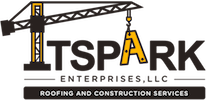You might’ve seen a 3D printed object before, but have you ever seen a 3D printed building? 3D printing has made its way into the construction industry, and it’s making waves. 3D printers can provide faster, cheaper, and more sustainable methods for construction. This new technology can also help solve various disadvantages of traditional construction. Keep reading to learn about how 3D printing is changing the construction industry!
3D Construction Printing: The Basics
3D construction printing (3DCP) is construction involving 3D printers that create structures on-site or components off-site for future assembly. Two of the most common ways they are used in construction are in gantry-style setups and robotic arms. When printing entire buildings, companies commonly use gantry-style setups. COBOD International, a world leader in 3DCP technology, has produced machines that have built three-story buildings up to 4,100 ft² and even schools. In 2021, 3DCP was used in Madagascar for the first ever 3D printed school. It was produced for half the typical cost of construction with a more sustainable design.
Benefits of 3DCP
3DCP comes with many benefits that traditional construction does not offer. The main benefits include cost-effectiveness, faster construction, improved sustainability, and more design flexibility. 3D printers in construction are cost-effective because there’s less need for additional labor. 3D printers require the exact amount of materials necessary which is more affordable than buying more than necessary. Since 3D printers can run for longer than the average human can work with minimal supervision, construction is quicker. 3D printers can build entire structures within a few days! Additionally, 3D printers generate almost no waste, and it’s easier to use recycled materials. Finally, 3D printing opens the door to more innovative solutions and new markets due to the increased design flexibility.
Challenges of 3DCP
There are benefits of using 3D printing in construction, but the challenges are admittedly daunting. One of the biggest challenges holding 3DCP back is the cost of 3D printing technology. Additionally, members of the construction industry lack 3D printing expertise, making the need for training essential. Small mistakes can become expensive with 3D printers because they involve many technological components. Because any new technology comes with challenges to overcome, it will take time to get the drawbacks worked out.
The Future of 3DCP
3D printing can change the construction industry for good, but the barriers to adoption are going to take time to overcome. 3DCP is used to create entire buildings, prototypes, architectural models, individual components, and more. As 3D printing enters other industries and the technology becomes more common, we expect to see it used in construction more. The increased need for more sustainable processes across the globe will also impact the evolution of 3DCP. We are excited to see how 3DCP continues to grow and evolve. While TSpark Enterprises has not adopted any 3DCP technology (yet), we are eager to provide our traditional construction services to your residential or commercial properties!
TSpark Enterprises, headquartered in Tallahassee, Florida, offers a wide range of roofing and construction services in the North Florida and South Georgia area. Visit our website or call (850) 766-1340 to get a free estimate and embark on your construction journey today!

